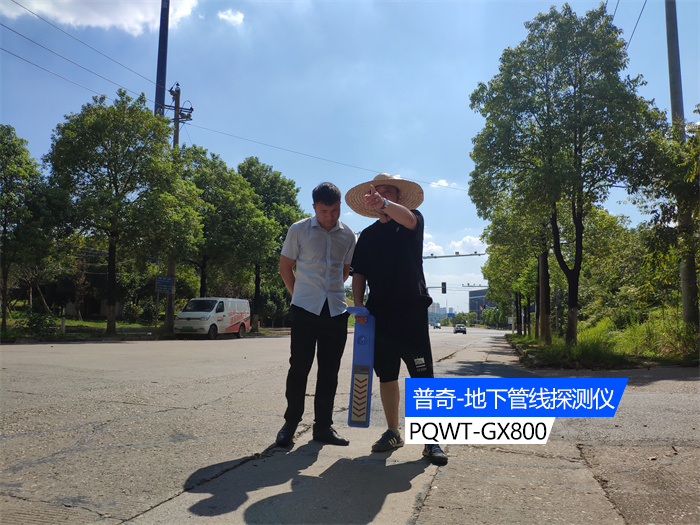In the process of urbanization, underground pipelines, as an important part of urban infrastructure, become more and more important for their safe and efficient management. As the key technology in this field, the development and application of underground pipeline detector and leakage detection are of great significance to improve the level of urban management. In this paper, we will discuss the principle and method of underground pipeline detector and leakage detection, in order to provide useful reference for relevant practitioners.

First, the principle and method of underground pipeline detector
The principle of underground pipeline detector is based on the principle of electromagnetic induction, by applying a primary magnetic field to the underground pipeline, and measuring the changes in the secondary magnetic field on the ground, so as to determine the location and depth of the pipeline. In practical application, the commonly used detection methods include the following three:
1. Peak method: when the receiver is located directly above the pipeline, the signal indication value is the largest and the sound is the loudest. By adjusting the gain, the receiver detects the signal above or near the pipe line. Peak method is suitable for detecting metal pipelines, especially for dense pipelines or less disturbed areas.
2. Peak and valley method: when the receiver is located directly above the pipeline, the signal indication value is the smallest, almost no sound indication. By adjusting the gain, so that the receiver in the pipeline directly above the signal and sound indication, while in the pipeline on both sides of the sound indication. Peak and valley method is suitable for detecting non-metallic pipelines or areas with large interference.
3. Step voltage method: through the "A" frame connected to the receiver, using the leakage signal step voltage detection. This method is suitable for direct buried pipeline faults and skin breakage fault localization, especially for street light cables, direct buried power cables, direct buried communication cables, direct buried fiber optic cables, as well as underground metal anti-corrosion pipeline insulation faults quickly and accurately locate the ground.
Second, the principle and method of underground pipeline leakage detection
The purpose of underground pipeline leakage detection is to detect pipeline damage and leakage, to ensure the normal operation of the pipeline. The principle of leakage detection is based on the conductivity measurement method, which determines whether there is leakage by measuring the conductivity of the pipeline. In practical application, the commonly used leakage detection methods include the following:
1. Direct leakage detection method: DC or AC signal is applied to the pipeline to determine the leakage by measuring the conductivity change of the pipeline. This method is applicable to metal pipelines and has high accuracy and reliability.
2. Step voltage method: using the "A" frame connected to the receiver, by measuring the step voltage of the pipeline to determine the leakage. This method is suitable for direct buried cable, underground metal anti-corrosion pipeline skin breakage fault location, especially for street light cable, direct buried power cable, direct buried communication cable, direct buried fiber optic cable.
3. Acoustic leakage detection method: by measuring the acoustic signal of the fluid in the pipe to determine the leakage. This method is suitable for gas, liquid and other fluid pipeline leakage detection, with non-contact, high precision, high resolution and other advantages.
Third, the development trend of underground pipeline detector and leakage detection technology
With the acceleration of urbanization and the continuous development of science and technology, the underground pipeline detector and leak detection technology is also progressing and improving. In the future, these technologies will show the following development trends:
1. Three-dimensional system popularization and application: with the development of three-dimensional imaging technology, underground pipeline detectors will gradually realize three-dimensional. The three-dimensional system can provide more intuitive, three-dimensional pipeline distribution map, which is convenient for managers to better understand the layout and condition of underground pipelines and improve management efficiency.
2. Intelligent technology application: with the development of intelligent technology, underground pipeline detector and leakage detection will gradually realize intelligent. The application of intelligent technology can improve the precision and efficiency of detection and leakage detection, reduce labor costs, and provide more efficient and accurate services for urban management.
3. Comprehensive pipeline corridor construction and management: with the continuous promotion of the construction of comprehensive pipeline corridor, the underground pipeline detector and leakage detection technology will pay more attention to the construction and management of comprehensive pipeline corridor. The construction of comprehensive pipeline corridors can solve the problems of urban pipeline confusion and maintenance difficulties, and improve the management level of urban infrastructure.








